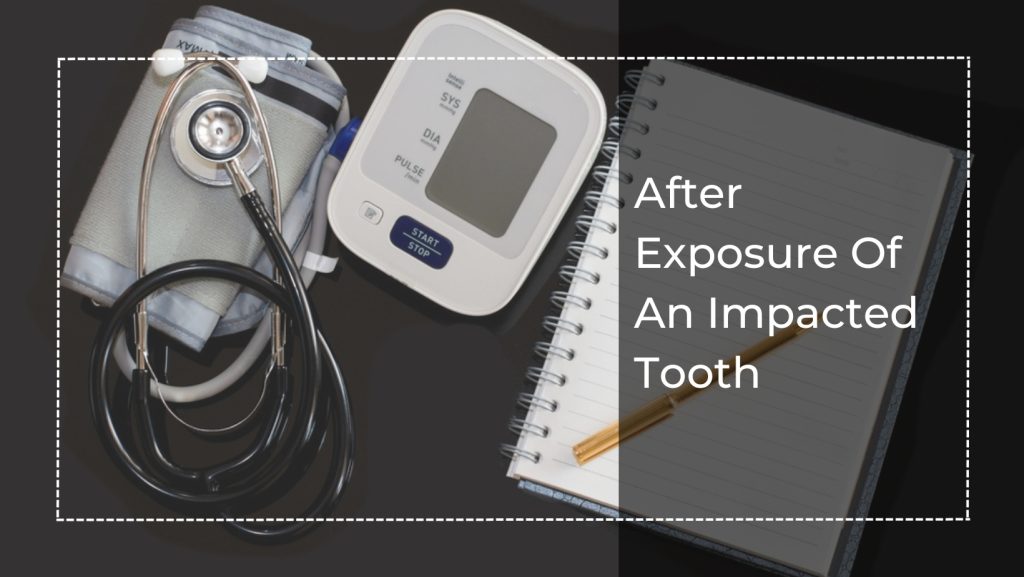
Following the exposure of the impacted tooth by your oral surgeon, it is crucial not to disturb the wound. If surgical packing was placed, please leave it undisturbed. The packing serves the purpose of keeping the tooth exposed and aiding in the healing process. In the event that the packing becomes dislodged or falls out, there is no need to be alarmed. Simply follow the post-operative instructions provided by your oral surgeon for the best outcome.
BLEEDING
Apply direct pressure on the surgical site by closing your mouth on rolled-up gauze. Keep it in place for one hour, then remove it. Minor blood on the gauze is normal. Check for minimal bleeding, and if none, you can eat. If bleeding persists, use a fresh gauze with tap water for 20-30 minutes. You can use two gauzes together if needed. If bleeding concerns persist after changing the gauze twice, contact us. Expect slightly pink-tinged saliva and pillow soiling for 1-2 days. Consider using a towel to cover the pillow.
PAIN MANAGEMENT
Interface surgeons recommend taking pain medication before the local anesthetic wears off, ensuring it’s already effective. A preventive approach to pain relief is best, taking medication before feeling pain. If multiple medications are provided, alternate their usage for even pain control. For example, take ibuprofen first, followed by Tylenol #3 after a few hours. Take medications after breakfast and before bed, dividing the remaining doses throughout the day.
NSAIDs like Advil or ibuprofen should be used with Tylenol as the pain relief strategy. Narcotics should be reserved for breakthrough pain. Surgical pain typically subsides within 24-48 hours. Symptoms like ear pain, swallowing difficulty, jaw opening issues, or a sore throat after general anaesthesia are normal within the first week. If pain persists despite medication, contact the team for assessment.
DIET
Proper nutrition is vital for healing after surgery. Start eating after removing the gauze, but avoid it while the anesthetic is active. Consume smooth-textured foods and drinks, avoiding straws. Transition to mashed foods for 3-5 days. Avoid crunchy foods, hot foods, and straws for 24 hours. Resume a normal diet when comfortable. No alcohol for 2 days. Nausea should subside within hours, but contact us if it persists.
SWELLING
Swelling is common after surgery and peaks on day 3 before gradually reducing over 2-3 days. Apply ice packs or frozen vegetable bags for 15 minutes post-surgery to minimize swelling, avoiding direct plastic contact with the skin. Steroids or NSAIDs like ibuprofen, ketorolac, or naproxen may be prescribed to reduce swelling and provide pain relief.
ORAL HYGIENE
Do not smoke for 7 days after surgery to promote healing and reduce pain. Avoid vigorous mouth rinsing and brushing the surgical site for 24 hours. Gentle tooth brushing can resume the day after surgery, avoiding the surgical areas initially. The night of oral surgery, use the prescribed Peridex Oral Rinse before bed. Start using mouthwashes the morning after surgery, such as warm salt water solution or prescribed mouthwash. Rinse over the surgical area for 30 seconds twice a day. If provided, use the syringe to flush extraction sites with warm salt water from day 4 after surgery to prevent food trapping.
ACTIVITY
After surgery under sedation or general anesthesia, rest at home and avoid operating machinery for 24 hours. You may feel light-headed or weak, so gradually resume light activities as tolerated. Refrain from strenuous activity for 3-5 days to stay comfortable and reduce swelling and bleeding risks.

